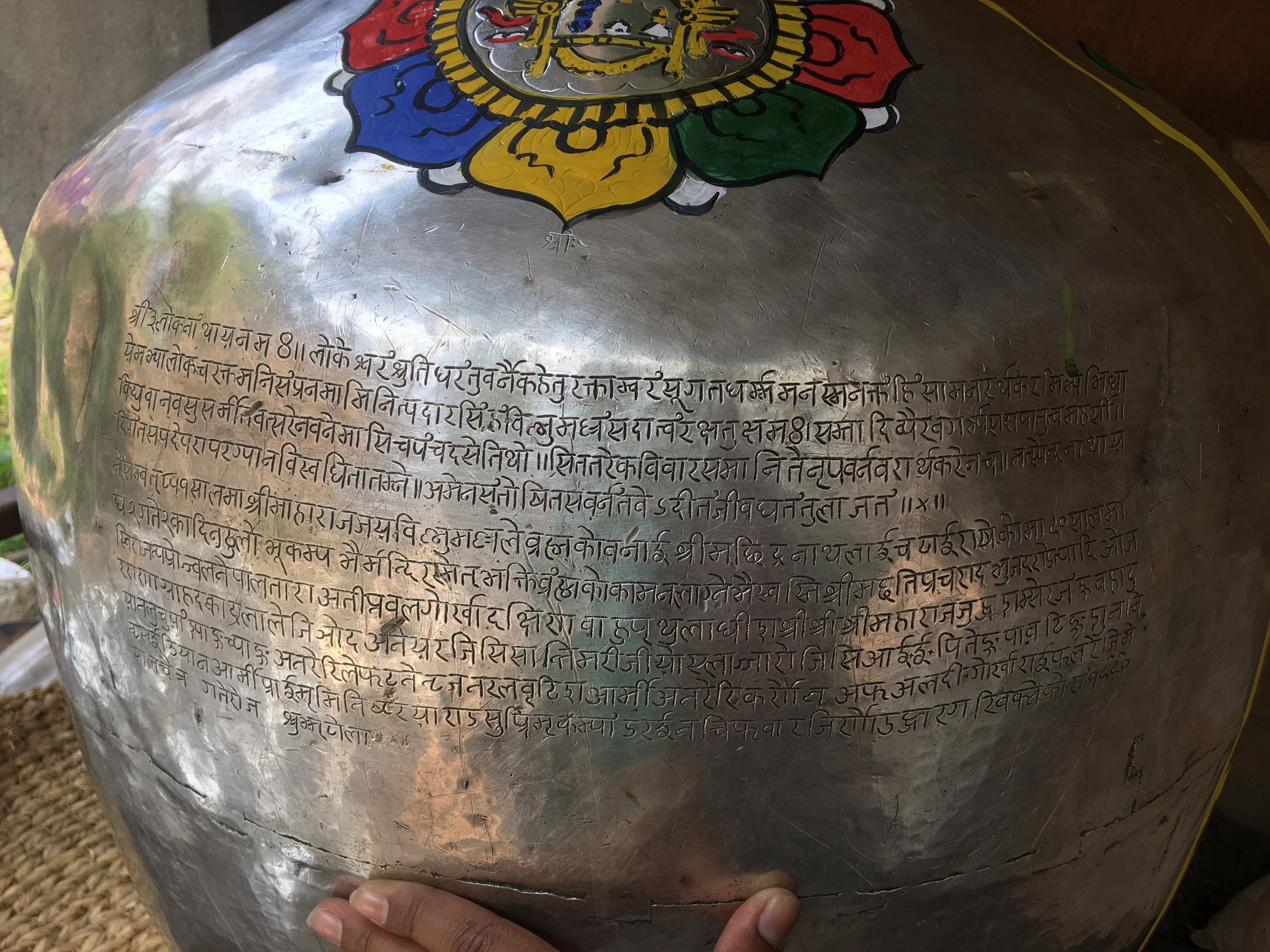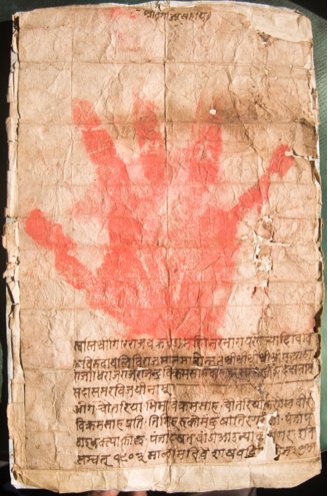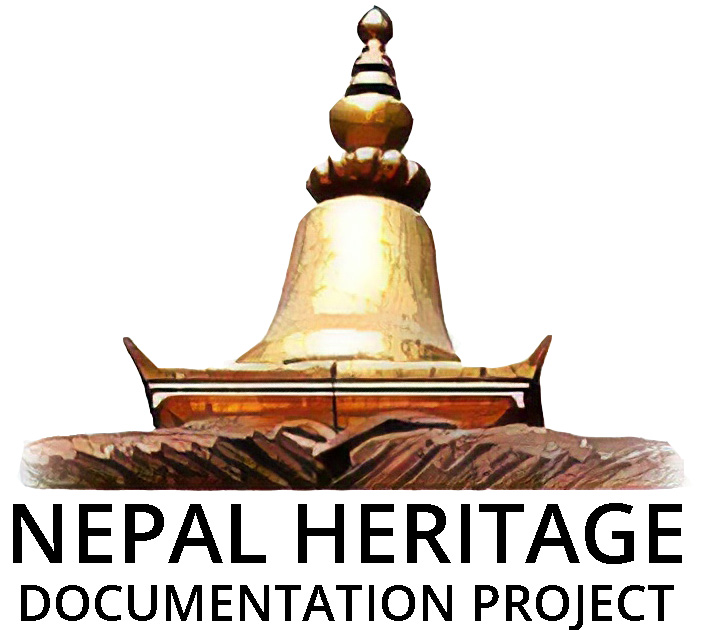THE PROJECT
The NHDP is a collaborative project between the Heidelberg Centre for Transcultural Studies (HCTS) and the Heidelberg Academy of Sciences and Humanities (HAdW), with key partners in Nepal including the
Saraf Foundation of Himalayan Traditions and Culture, the Department of Archaeology of the Government of Nepal, and the Kathmandu Valley Heritage Trust. The project focuses on documenting and describing the built structures in
the Kathmandu Valley, western Nepal, and culturally and historically associated sites such as Mustang, while also highlighting their relationship to Nepal's unique intangible heritage. This is done by a professional team of
architects, photographers, historians, Indologists, anthropologists, and heritage experts in collaboration with an international team of scholars and IT-specialists for data management based in Heidelberg.
The project is supported by the Arcadia Fund and co-financed by Heidelberg University's Flagship Initiative Transforming Cultural Heritage and Field of Focus 3, which includes the development of the freely available
NepalHeritageApp and Thematic Heritage Walks. The data collected will be sustainably and openly accessible stored on Heidelberg University Library's image database, HeidICON, as well as HeiDATA, using the open-source software
platform for cultural heritage inventory and management, Arches (v.7), developed jointly by the Getty Conservation Institute and the World Monuments Fund.
NHDP is supported by the Arcadia Fund of Lisbet Rausing and Peter Baldwin. Arcadia
MISSION STATEMENT
- We commit to making publicly and freely available the digital documentation of predominantly unpublished endangered cultural heritage from core areas in the Kathmandu Valley, Nepal. The digitized material (originally produced as well as copyrighted) is sustained on a long-term basis at Heidelberg University Library.
- With this documentation, we want to contribute to, expand and deepen the knowledge about Nepal’s rich tangible cultural heritage as well as the intangible heritage (such as rituals, social use but also the delicate craftsmanship) connected with the built monuments, we co-produce and share the documentation with heritage experts, scholars, architects and interested publics from and in Nepal as well as internationally.
- We envisage that the material on DANAM provides information by non-commercial means to organisations and individuals who aim at reconstructing and preserving endangered built heritage, for instance, after an earthquake, but also in the context of learning about Nepal’s rich heritage at institutions of Higher Education and schools (disciplines such as history and art history, engineering, art and architecture, urban planning and urban design).
- It is our aim to discourage theft and illicit-trafficking of artifacts and cultural objects from Nepal through documentation and communication with local stakeholders and public institutions such as the Department of Archaeology (DoA) with whom we partner, and to provide such information to enable the safe return of stolen objects and images to their place of origin.
- The NHDPs aspiration is also to train younger generations in heritage documentation (such as photography, but also Digital Humanities/IT), and to share knowledge with our network of partners and alliances.
- Since collaboration and sharing are relevant to us, we seek to work and partner with individuals, organizations, and public and private entities that share the goals of preserving and promoting awareness for the artistic and cultural heritage of Nepal.
HOW WE WORK
If you are interested in Nepal's rich cultural heritage, there are different ways to utilize our database, DANAM. We encourage you to delve deeper beyond individual monuments and explore the diverse relations between them, including how people use them in rituals, festivals, and processions. For a more comprehensive understanding, you can explore our Heritage Focus Areas, which are densely related ensembles of monuments that feature dynamic aspects of built cultural heritage. In addition, we invite you to walk along and explore the built and intangible heritage in selected locations using the NepalHeritageAPP. All of these resources are connected to DANAM.
Glimpse of our work in Kirtipur
NHDP’s Architectural Team at work
Campus TV Feature of NHDP’s work on documentation of endangered cultural heritage in Nepal
NETWORK AND PARTNERS
The Nepal Heritage Documentation Project is situated at the Heidelberg Centre for Transcultural Studies at Heidelberg University and the Heidelberg Academy of Sciences and Humanities. The NHDP’s key partners and representatives in Germany include the Heidelberg University Library and i3mainz - Institute for Spatial Information and Surveying Technology, whilst the project is supported in Nepal by the Department of Archaeology (DoA) of the Government of Nepal and the Saraf Foundation of Himalayan Traditions and Culture. We are also collaborating with the Kathmandu Valley Preservation Trust (KVPT), UNESCO Nepal, and Kathmandu University (Centre for Art and Design ). The project has brought together a team of professionals across the spectrum of heritage work: from architects and draftsmen, to historians and anthropologists, to specialists in Digital Humanities and IT development. With the help of our network and partners, we hope to continue to reach out to other organisations with an interest in heritage preservation and documentation, as well as to institutions of Higher Education in Nepal, to ensure that the database is used and further sustained.
ASSOCIATED PROJECTS
Anthropology of Inscriptions: Memory and Cultural Heritage in the Public Sphere

The "Anthropology of Inscriptions: Memory and Cultural Heritage in the Public Sphere" project, funded by Heidelberg University's Flagship Initiative "Transforming Cultural Heritage," aims to explore the significant role of inscriptions, graffiti, and other forms of publicly displayed written communication in shaping spaces, identities, collective memory, and values in the Kathmandu Valley. This research initiative focuses on a curated collection of inscriptions, documenting, editing, and publishing them digitally in collaboration with the Nepal Heritage Documentation Project (NHDP) and the Research Unit "Documents on the History of Religion and Law of Premodern Nepal" (HadW, see below). Utilizing methods from Visual Anthropology and Philology, the project takes an interdisciplinary and transtemporal approach to studying the inscriptions as both visual images and textual artifacts. They are viewed as layers of past meaning and sites of contemporary struggles, offering insights into the connections between ritual practices, festive activities, and heritage landscapes within the context of monument sites. However, due to factors such as rapid urbanization, infrastructure development, and natural disasters, many of these inscriptions are currently at a high risk of being lost.
Heritage as Placemaking: The Politics of Solidarity and Erasure in South Asia

The research project "Heritage as Placemaking: The Politics of Solidarity and Erasure in South Asia" (HaP) explores the factors that enable or hinder heritage and the potential of heritagisation to foster solidarity. It emphasizes the importance of people's commitment to working together and investing in the cultural future of their communities. HaP challenges the dominant role of external authorities and experts in sustaining cultural heritage and instead focuses on the agency of those who identify with and uphold heritage. The project acknowledges the decay of many heritage sites in South Asia due to urbanization, changing living conditions, labor migration, and climate change. It investigates how local and transregional agents utilize heritage as a tool to resist eviction, road widening, and real estate development. Heritage is seen as a political argument through which stakeholders negotiate the future. The research team, based in Heidelberg, Kathmandu, London, and Delhi, examines the decision-making processes behind the formation, preservation, decay, and erasure of heritage. They advocate for the decolonization of heritage discourse to amplify local voices and explore social aesthetics and contemporary uses of the archive as sources of inspiration. The project takes a relational approach to understanding affective and performative imaginaries and practices that transcend traditional notions of territory and place. HaP thus contributes to a critical reevaluation of heritage production beyond developmentalism and preservation, drawing on critical heritage studies, new area studies, and transcultural urbanization studies.
Documents on the History of Religion and Law of Pre-modern Nepal

The project "Documents on the History of Religion and Law of Pre-modern Nepal" investigates Nepal's rich textual material from the 18th and 19th centuries, including temple documents, administrative records, and legal documents. It explores the socio-cultural transformations brought about by the formation of the Himalayan state and the expansion of Hindu rule. The project, with research units in Heidelberg and Patan, systematically studies this unique corpus and provides digital scholarly editions and translations of selected documents. A key aspect of this project is the creation of a digital open access database, which consolidates references to both edited and unpublished documents. The project shares the goal of creating an open access database with the Nepal Heritage Documentation Project (NHDP). NHDP utilizes this research as a historical resource for information on monuments.
Urban transformation and Placemaking: Fostering Learning from South Asia and Germany


The project “Urban transformation and placemaking: Fostering Learning from South Asia and Germany”, funded by the German Academic Exchange Service (DAAD), is located at CATS/HCTS in Heidelberg and is a part of the Shaping Asia networking initiative. In cooperation with Sujan Chitrakar at the Kathmandu University’s Centre for Art and Design and Prof. Arunava Dasgupta from the School of Planning and Architecture, Delhi, the project aims for an inter- and transdisciplinary exchange of students, faculty, museums and non-governmental institutions and at training students and junior faculty in the Humanities and Social Sciences as well as Art and Urban Design, to shape socially responsible and sustainable career paths by means of handling future-oriented questions and methodological challenges related to the ‘Urban Age’. The multi-sited network pays particular attention to the study of urban responses to the interconnectivity of natural and man-made crises in cities, e.g., earthquakes, climate change, migration, endangered heritage and cultural diversity. A focus on placemaking, that is, how people shape their urban habitats and everyday worlds in cities, is especially promising for such an approach. To explore this in a multidisciplinary, comparative and connected way is a major goal of this triangular partnership. Thematically seen, the comparative lens on Delhi and Kathmandu contributes to better understanding of intra-Asian urban transformation without reducing the cities to the often attributed stereotypical ‘chaos’. Delhi and Kathmandu are contact zones for a wide range of communities from varying ethnic and geographic origins. Along with this, the mobile population of migrants and visitors, both domestic and foreign, makes these cities receptacles of cultural and social diversity. Across the wide spread of these metropolises, the multi-layered physical and social fabrics of the city is characterized by distinctive zones of concentrations of urban life and heritage, e.g., mansions (havelis) in the historic town of Shahjahanabad in Delhi or Buddhist compounds (bāhāḥ,bahi) and arcaded rest houses (pati) in the royal quarters in Patan, Bhaktapur and Kathmandu.
